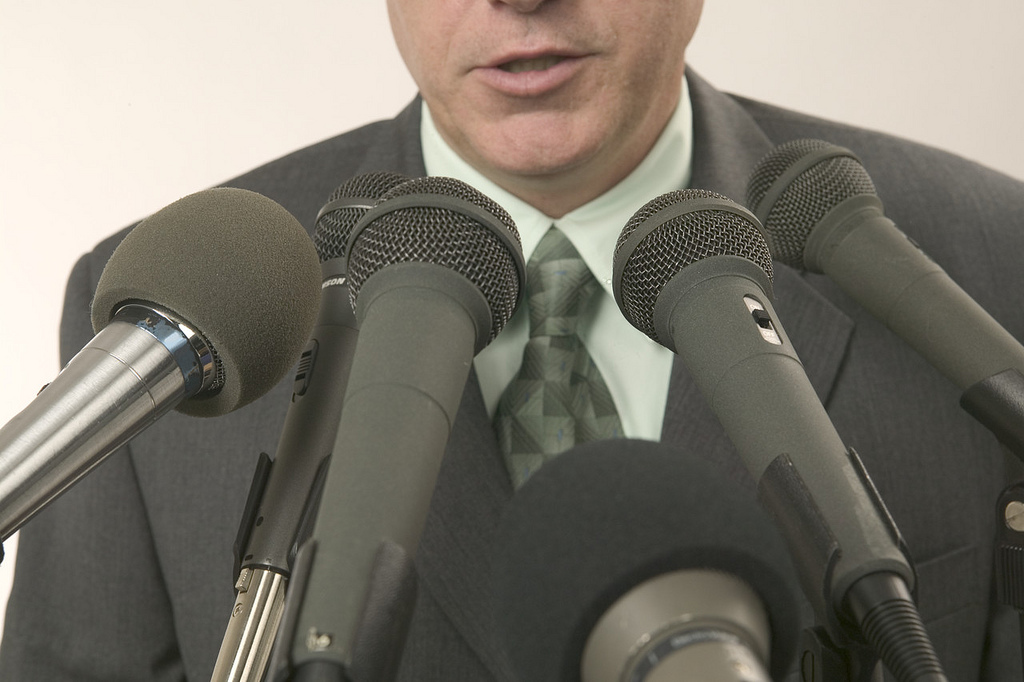Though the 2016 election is almost a year away, it is still a popular subject in the media. The media creates an illusion that voters have only two choices in candidates: Democrat or Republican. The media also narrows the field by only discussing the leaders in the polls. The media could play a larger part in name recognition for smaller campaigns, yet it largely ignores them in favor of politicians who make outrageous statements that make for good news.
One of the problems with the media’s coverage of politics is the dismissal of third-party candidates, i.e. Libertarian or Green parties. While the smaller parties may not put forward the best candidates for the job, the major parties put forward some less than ideal candidates as well. The voters should be given the chance to decide if a candidate from a third-party is electable, instead of the media dictating that the cause is hopeless before the voting even starts.
Think about it, how often are the Libertarian, Green, or Independent candidates mentioned in headline news, much less invited to presidential debates? Only one third-party candidate has participated in a presidential debate since 1988, when the Commission on Presidential Debates (CPD) started, and that was in 1992.
The CPD is a private, non-profit organization and receives no government funding. It states on its website that “it does not endorse, support, or oppose political candidates or parties.” One of its rules states that a third-party candidate must poll an average of 15 percent of the vote to even participate in debates. CPD uses five nationally ranked polls to determine this number; in 2012, the polls used were The Washington Post, The Wall Street Journal, The New York Times, Fox News, and Gallup. The concern voters should have with this is that not all of these polls are unbiased or accurate.
There is little likelihood that these polling numbers would support third-party candidates. Any poll is likely to suffer from a non-response bias, and it is entirely possible that the people who don’t respond to polls are the people who would vote for a third-party candidate.
The CPD claims the 15 percent rule limits the number of candidates taking part in the debate to a reasonable number, saying that they cannot allow every candidate to take part in the debates. However, a candidate qualifies for the presidential ballot after gathering the support of anywhere from one to five percent of the vote, depending on the state.
Only one third-party candidate has participated in a presidential debate since 1988, when the Commission on Presidential Debates (CPD) started, and that was in 1992.
This number is not generated by polling like the CPD’s numbers, but by collecting signatures of registered voters. Based on qualification for the presidential ballot, starting in 1988, the most candidates the CPD would have had to include would be five third-party candidates in 2000, with four candidates being the most common number of qualified candidates. Think of it this way; every election year, the American public is unaware of the policies of four potential candidates for the presidency, any one of which could be a better candidate than the two candidates put forth by the major parties.
Imagine if the Nobel Conference took place without any of the students on campus knowing about it. It doesn’t matter if you would have attended it or not, but wouldn’t you have wanted to make the decision yourself?
The 15 percent rule causes another issue for third-party candidates who do not have the funds to compete with the two main parties. How can they achieve 15 percent of the vote without the extensive advertising used by larger campaigns, especially when the media and the polls ignore them?
The CPD states on its website, “Voters cite the debates more than any other single factor in considering how to cast their ballots.” If voters are basing their votes off debates where not all of the names on the ballot are represented, then those third-party candidates have already lost. This 15 percent rule is hardly an issue for the main parties’ candidates, so why should it apply to third-party candidates, the candidates who need the opportunity to reach the American public the most?
Essentially, the 15 percent rule prevents the third-party candidates who are on the ballot from gathering name-recognition. The CPD is deciding who the American public gets to consider for election, but that isn’t a decision the CPD should get to make for the American people.
The media has propagated a certain attitude among voters that I find particularly concerning; people are afraid to vote anything other than in alignment with the majority parties for fear that their vote ‘won’t count.’
The media and the CPD have led voters into thinking they must choose between the only two qualified candidates, when voters actually have a multitude of choices. The media is failing in its moral obligation to remain objective by funneling votes behind certain candidates, with the CPD deciding where those votes go, all while making voters believe they chose on their own.
Looking at all the potential names that could be on the ballot next November, I know it is ridiculous to expect anyone to look into them all, but I suggest that everyone eligible to vote, at the very least, looks into the ideologies of the third-parties. Don’t let the media make your decisions for you.
